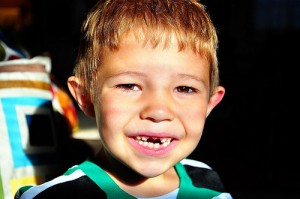Understanding Frontal Lisps
Children with a lisp have trouble articulating the “z” and “s” sounds. While young children often have trouble pronouncing sounds, children over the age of eight can typically articulate the “s” sound. Children typically begin to learn the “z” sound at about four years of age, and they typically have a firm grasp on the sound by the time they are eight. If your child is over the age of eight and still displays a lisp, have him evaluated by a speech-language pathologist (SLP). It’s also a good idea to bring him to an SLP earlier if you think he may be displaying a language delay. The earlier a child with a lisp receives speech therapy, the more readily his articulation may be corrected.
Identifying and Understanding Frontal Lisps
There are actually four different types of lisps, one of which is the frontal lisp (sometimes called an interdental lisp.) If your child is diagnosed with a frontal lisp, it means that his articulation difficulties arise from the forward movement of the tongue through the teeth. This causes your child to produce a “th” sound rather than an “s” or a “z” sound.
If you suspect your child might have a frontal lisp, watch his mouth closely as he speaks. You may notice his tongue protrude through his front teeth. Ask him to say the words “zoo” and “grasshopper.” If your child has a frontal lisp, he will pronounce them as “thoo” and “grathopper.”
Treating the Frontal Lisp
Your child’s speech-language pathologist may begin treating his frontal lisp by helping him to discern the differences between the “th” and “s” or “z” sounds. She may then instruct your child to repeat target words with the “s” and “z” sounds while keeping his teeth closed. This prevents the tongue from protruding through the teeth.
Some speech therapists also use the Seal Speech Buddy to help correct a lisp. This is a simple device that is partially inserted in the child’s mouth. It provides a target in the mouth so that your child knows when his tongue is in the proper position for articulation. Speech Buddies are easy and fun to use with your child; you can also use them at home.
Activities at Home
In addition to using the Seal Speech Buddy with your child, ask the speech therapist about activities to do at home to help accelerate your child’s progress. One licensed speech therapist recommends playing “copy cat” with your child. Grin at your child with your teeth closed to demonstrate and encourage him to do the same. Encourage him to hiss like a snake with you and produce “zzz’s” as though the two of you were sleeping. Once your child masters the individual sounds, move on to syllables and then words. Keep your child engaged by picking target words that represent your child’s favorite objects, such as “trains” and “pizza.”





